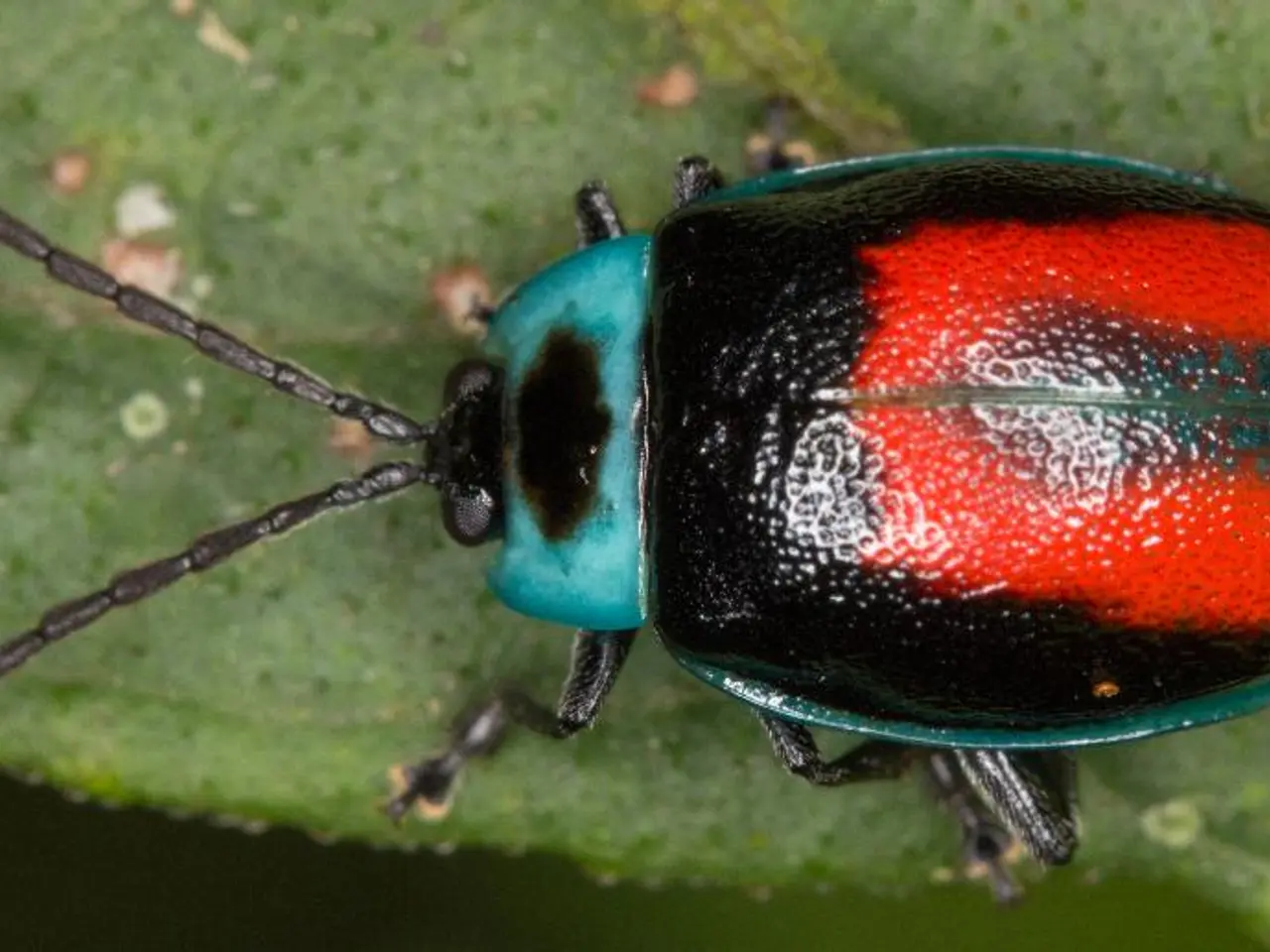Distinguishing Asian Lady Beetle from Ladybug: An Explanation of Differences
As the autumn leaves begin to fall, homeowners may find themselves dealing with an unwelcome guest - the Asian lady beetle. Unlike their native counterparts, these beetles tend to invade homes in large numbers before winter.
So, how can you tell the difference between Asian lady beetles and native ladybugs? Here are some key features to look for:
- Head Marking: Asian lady beetles have a distinctive pale "M" or "W" shaped marking just behind their heads. Native ladybugs lack this specific marking.
- Body Shape: Native ladybugs tend to be more rounded and dome-shaped, while Asian lady beetles are often slightly more oval or elongated in shape.
- Color: Native ladybugs commonly have red or orange colors with black spots, whereas Asian lady beetles are frequently orange with black markings but can vary.
- Behavior: Asian lady beetles tend to cluster in large numbers, especially on sun-exposed, light-colored walls in fall seeking overwintering spots inside homes. They may also release a yellow fluid (reflex bleeding) when disturbed, which stains surfaces. Native ladybugs, on the other hand, are generally beneficial garden insects that prey on aphids and do not invade homes in such numbers.
- Size and Surface: Both have similar small sizes and shiny, smooth, dome-shaped bodies, but Asian lady beetles are more likely to be found indoors in large clusters, while native ladybugs usually stay outdoors hunting pests.
Prevention is key when it comes to dealing with Asian lady beetle infestations. Sealing cracks, installing weather stripping, and repairing screens around doors and windows can help keep these beetles out. Planting gardens that support native species can also help keep beneficial insects around.
If an infestation does occur, vacuuming can be used to collect the beetles. Soapy water can help with minor infestations, but avoid crushing the beetles as their smell is potent.
Remember, the most reliable identification cues are the Asian lady beetle’s pale “M” or “W” head marking and their tendency to invade homes in large numbers, contrasting with the more rounded shape and garden-friendly behavior of native ladybugs.
Stay informed and stay prepared as the weather turns cooler!
- The distinctive pale "M" or "W" head marking that Asian lady beetles possess serves as a clear differentiator from native ladybugs, who lack this specific feature.
- In contrast to the beneficial garden insects that native ladybugs are, Asian lady beetles tend to invade homes in large numbers, seeking overwintering spots, and may even release a yellow fluid when disturbed.




